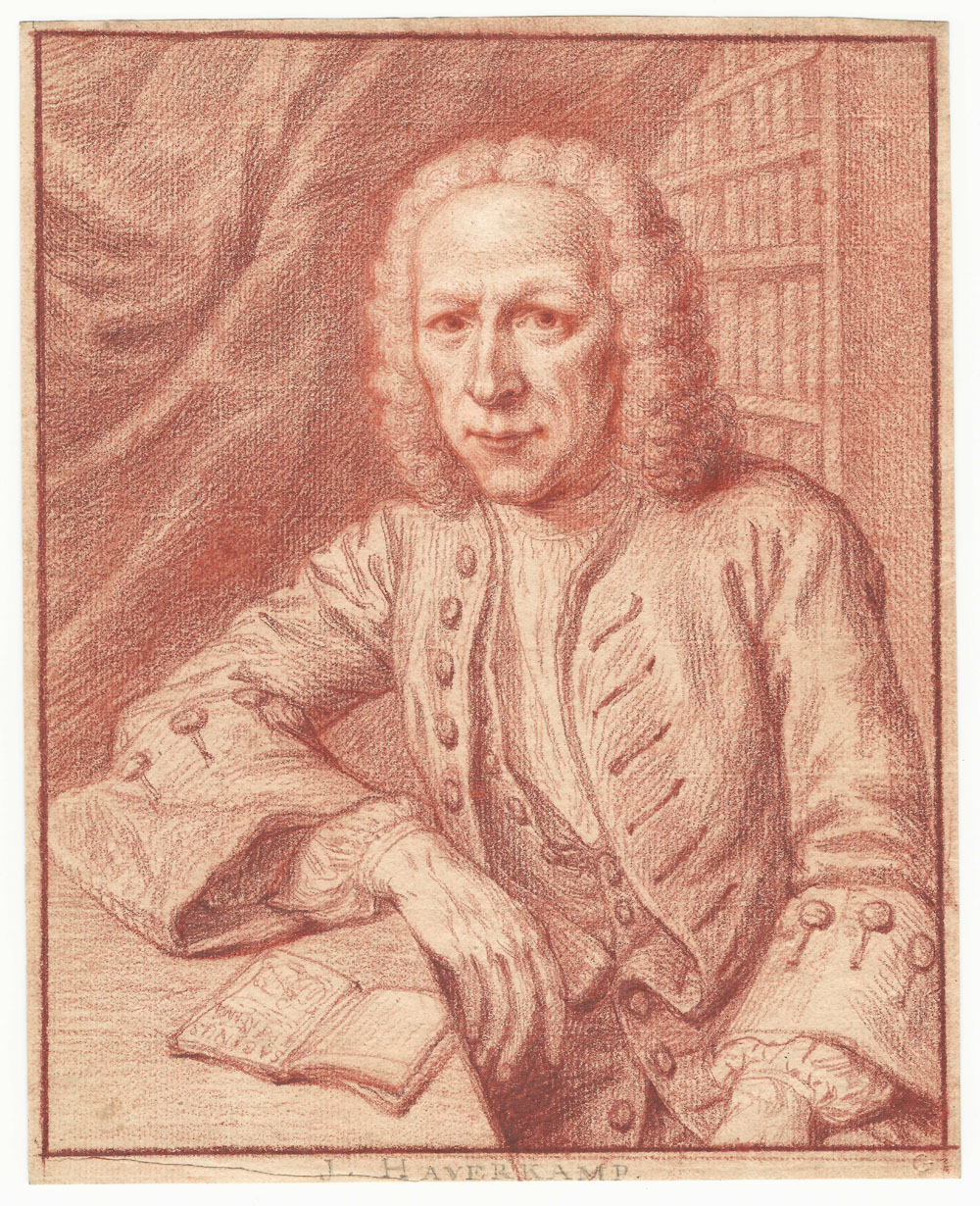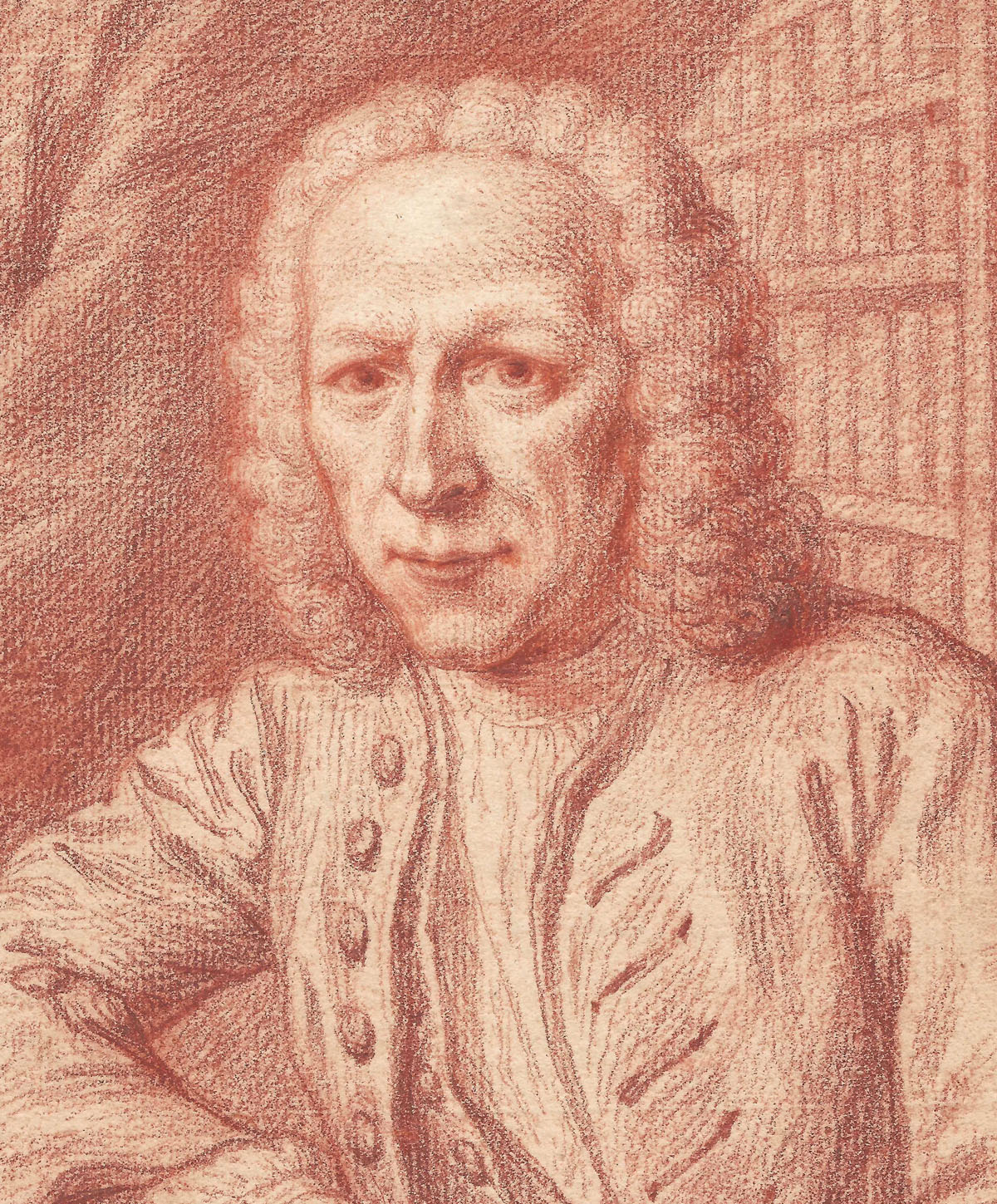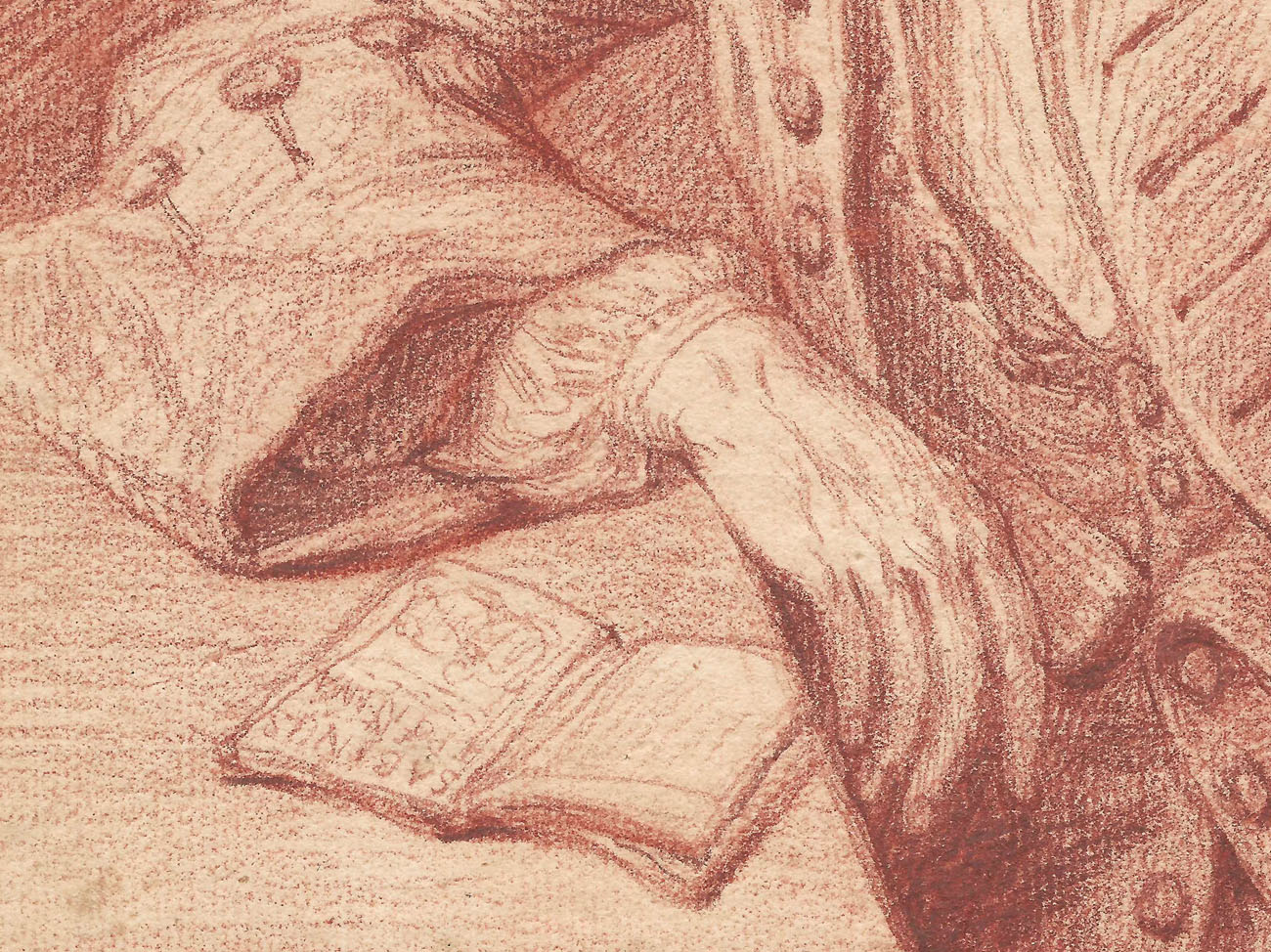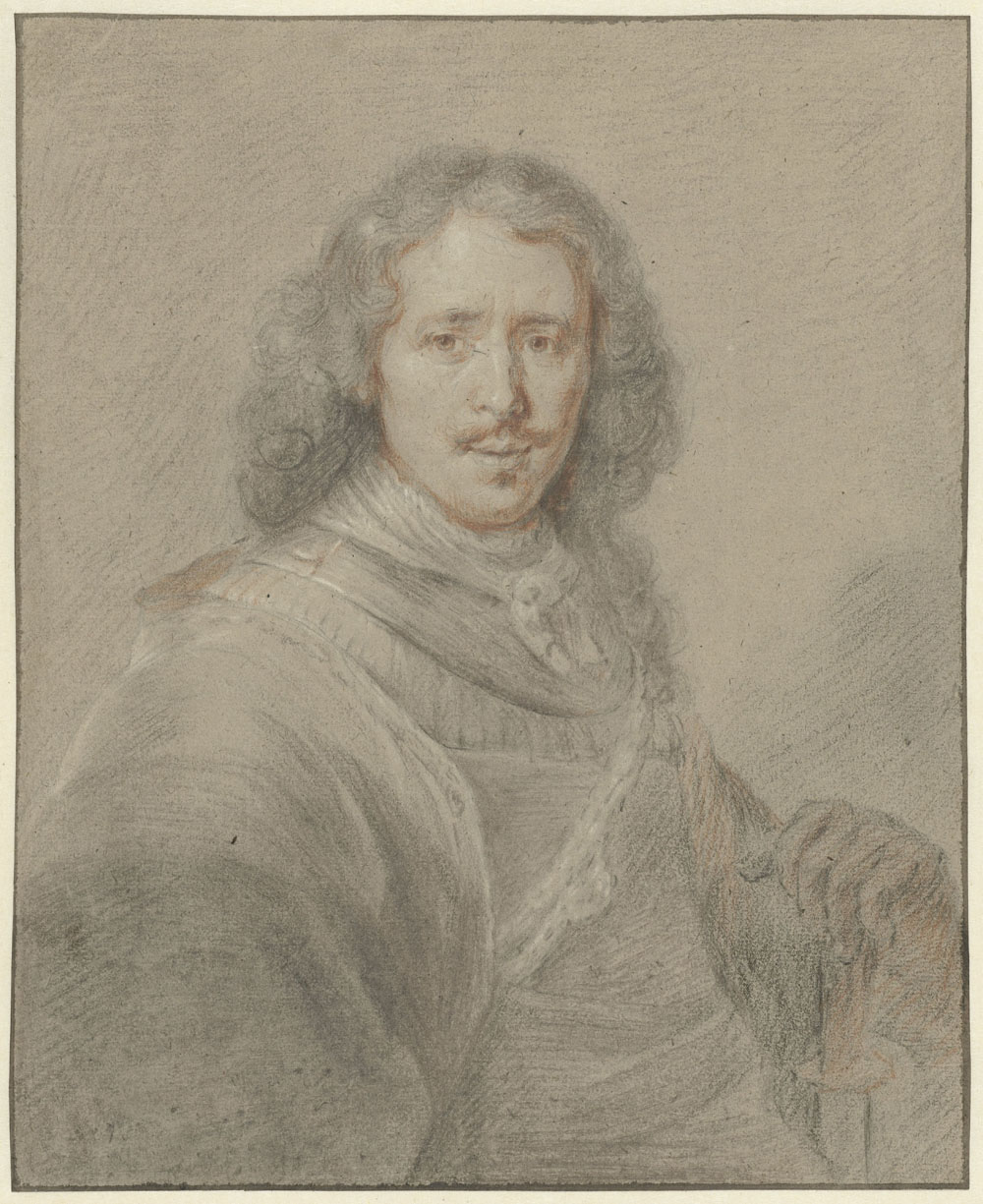JAN MAURITS QUINKHARD (Rees 1688 – 1772 Amsterdam)
Jan Maurits Quinkhard (Rees 1688 – 1772 Amsterdam)
Portrait of the writer, playwright and poet Johannes Haverkamp (1684 – 1754)
Red chalk, red chalk framing lines, partial watermark fleur-de-lys, 233 x 187 mm (9.2 x 7.4 inch)
The drawn title-page inscribed ‘SABINUS / EN / EPONINA’ (red chalk); inscribed along the lower edge ‘J. Haverkamp’ (grey ink)
Provenance
~ Jan Baptist de Graaf (1742–1804), Amsterdam (Lugt 1120, lower right)
~ Couvreur, Breda, 1965
~ Private collection, The Netherlands, until 2018
***
Jan Maurits Quinkhard was born in Rees, near Cleves, the son of the painter Julius Quinkhard I, who was his first teacher.1 By 1710 he was living and working in Amsterdam, where he was taught by Christoffel Lubieniecki (1659–1729), Nicolaas Verkolje (1673–1746) and Arnold Boonen (1669–1729), all leading artists of the period. In addition to producing paintings, drawings, miniatures and designs for prints and engravings, he restored paintings and dealt in art. Quinkhard was of the founding members of the Amsterdam Stadstekenacademie, or drawing academy. Among his pupils were many important artists of the period, including his son Julius Henricus Quinkhard, Jurriaan Andriessen, Jan de Beijer, Tibout Regters and Jan Stolker. Quinkhard was one of the leading portrait painters in Amsterdam of the day, and portraits by him can today be found in several museums, including the Rijksmuseum and the Amsterdam Museum in Amsterdam and the Centraal Museum in Utrecht.
Here Quinkhard has portrayed the writer, playwright and poet Johannes Haverkamp (1684–1754), showing him as a man of letters and learning, with a bookcase in the background.2 Haverkamp was born and spent his whole life in Amsterdam, where he married Emerantia Hardenbroek in 1707. Haverkamp translated plays and historical works from French, and also published volumes of his own poetry and historical writings. His portrait was included in the Panpoëticon Batavum by Arnold van Halen (1673–1732), a collection of over a hundred portraits of poets, which was embellished by Jan Maurits Quinkhard, upon which Jan de Marre wrote laudatory verses in 1737.3 Many of the portraits from the Panpoëticon are now in the Rijksmuseum, but Haverkamp’s likeness is sadly lost.4
Quinkhard has shown Haverkamp holding a copy of his popular tragedy Sabinus en Eponina, published in Amsterdam in 1741. A trompe l’oeil ‘bedriegertje’ by the Jewish artist Aaron Santcroos with a meticulously drawn copy of the title-page was also in the collection of White Rose Fine Art and can be found here.
Few drawings by Jan Maurits Quinkhard are known today, but our carefully drawn portrait can for instance be compared to a drawing in the Rijksmuseum, a portrait in coloured chalks of Philips van Dorp, copied after Rembrandt (fig.).5
1. For the artist, see P. Knolle, ‘Duitse schilders in de Hollandsche school. Hun komst, verblijf en reputatie 1680-1820’, De achttiende eeuw 40 (2008), no. 1, pp. 31-49 and Jane Turner (ed.), The Dictionary of Art, London 1996, vol. XXV, pp. 822-23.
2. For Haverkamp, see P.C. Molhuysen, P.J. Blok, L. Knappert and F.K.H. Kossmann (eds.), Nieuw Nederlandsch Biografisch Woordenboek, Leiden 1911-1937, vol. II, pp. 551-552.
3. “Op het Afbeeldzel van den heere Johannes Haverkamp. Dus trof Apelles Zoon, het werktuig van ’t verstant, / Dat ’t Lands geschichten maalt op een volmaakten trant; / Uitheemsche volken, in hun zege en ongelukken, / Uit ’s Waerelds donkere eeuw in onzen dag kan rukken; / Waar aan de dappre Zweed oneindig is verpligt, / Daar ’t zyne Koningen een eeuwige eerzuil sticht; / Terwyl ons Schouwtooneel dat oor en ziel kan treffen, / Zyn Dichttaffreelen tot den Hemel moet verheffen: / Wie is dat groot vernuft, door omtrek niet bepaalt? / ’t Is Haverkamp, die hier in ’t koor der Dichtren praalt.”, Jan de Marre, Arnoud van Halen’s Pan Poëticon Batavûm verheerlijkt, Amsterdam 1737, p. 140.
4. For the series, see Lieke van Deinsen, The Panpoëticon Batavum: the portrait of the author as a celebrity, Amsterdam 2016.
5. Red, black and white chalk, 290 x 235 mm, Rijksprentenkabinet, Rijksmuseum, Amsterdam, inv. no. RP-T-00-1841.



